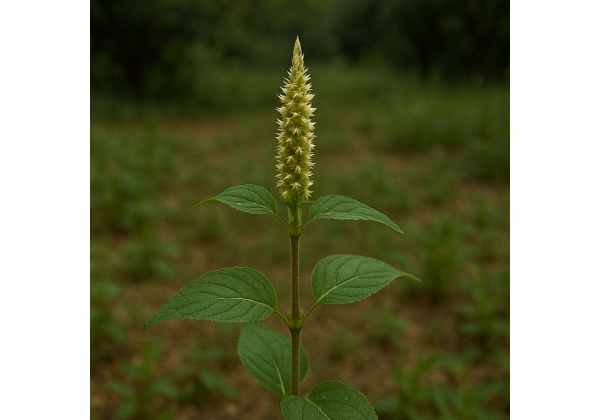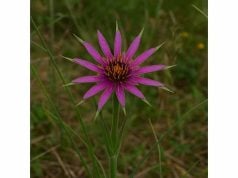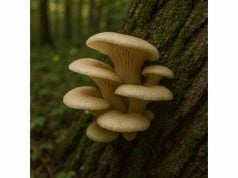
Ox Knee is a venerable herb, steeped in centuries of traditional healing wisdom and increasingly validated by modern research. Renowned for its potent anti-inflammatory, blood-circulation–enhancing, and bone-strengthening properties, Ox Knee supports joint health, alleviates chronic pain, and bolsters overall vitality. Its active compounds, including saponins, polysaccharides, and flavonoids, work synergistically to promote tissue repair, improve metabolic functions, and regulate the immune system. Commonly used in decoctions and herbal formulations, Ox Knee serves as a natural remedy for musculoskeletal ailments and circulatory disorders, bridging traditional Chinese medicinal practices with contemporary integrative health solutions.
Table of Contents
- Plant Profile and Identification
- Phytochemical Profile and Active Compounds
- Health Benefits and Therapeutic Qualities
- Practical Applications and Safety Guidelines
- Research Insights and Key Findings
- Frequently Asked Questions
Plant Profile and Identification
Ox Knee, known in traditional Chinese medicine as “Niuxi” (牛膝), is derived from the plant Achyranthes bidentata, a perennial herb belonging to the Amaranthaceae family. This herb is indigenous to East Asia and thrives in temperate regions with well-drained soils, often found in open fields, along roadsides, and in disturbed areas where sunlight is plentiful. The plant typically reaches heights of 30–70 centimeters and features an intricate network of fibrous roots that contribute to its reputed ability to strengthen bones and tendons.
The botanical characteristics of Achyranthes bidentata are distinct. Its stems are erect and somewhat angular, while the leaves are ovate to lanceolate, exhibiting a smooth, glossy surface that turns a deeper green as the plant matures. One of the most striking features of Ox Knee is its leaf arrangement: the leaves emerge in opposite pairs, often displaying a characteristic three- or five-lobed pattern that resembles a cloven structure. This unique morphology not only aids in plant identification but also symbolizes the herb’s reputed efficacy in harmonizing bodily functions in traditional medicine.
During the flowering season, which typically occurs in late summer to early autumn, Ox Knee produces small, inconspicuous flowers that are greenish-white in color. These blossoms form in clusters and are known to attract a variety of pollinators, including bees and butterflies, thereby ensuring the plant’s propagation in its natural habitat. The fruits of Achyranthes bidentata are small, nut-like structures that remain attached to the stem, and their distinctive two-toothed (bidentate) appearance is the origin of the species epithet “bidentata.”
Historically, Ox Knee has been cultivated not only for its medicinal applications but also for its ornamental value. Its resilience in diverse environmental conditions and minimal care requirements have made it a favored herb among traditional herbalists and modern cultivators alike. The herb’s adaptability is evident in its ability to flourish in both wild and cultivated settings, often thriving in marginal lands where other plants struggle to survive.
Modern botanical research has delved deep into the genetic and morphological traits of Achyranthes bidentata. Studies using microscopic analysis have revealed the presence of glandular trichomes on the leaves and stems, which secrete essential oils and other secondary metabolites. These microscopic structures are thought to play a significant role in the plant’s defense mechanisms against pathogens and herbivores, while also contributing to its overall medicinal potency.
In addition to its physical attributes, the ecological role of Ox Knee is noteworthy. The plant contributes to soil stabilization with its extensive fibrous root system and enhances local biodiversity by providing habitat and food for various insects. Its presence in the wild is often an indicator of a healthy ecosystem, underscoring its environmental importance as well as its therapeutic value.
Traditional texts dating back thousands of years have extolled the virtues of Ox Knee, often citing its ability to invigorate the blood, strengthen bones, and improve joint mobility. These historical records have spurred modern investigations into the herb, linking its traditional uses with contemporary biomedical research. The confluence of time-honored wisdom and modern science has elevated Ox Knee as a critical component in herbal formulations designed to address musculoskeletal and circulatory disorders.
Cultivation techniques for Ox Knee have evolved over time. In traditional settings, the herb was often gathered from the wild, but today, sustainable agricultural practices ensure that high-quality Achyranthes bidentata is cultivated under controlled conditions. Organic farming methods and careful selection of superior cultivars have significantly enhanced the consistency and potency of the harvested material, making Ox Knee an increasingly reliable resource for both traditional and modern medicinal applications.
In summary, the plant profile and identification of Ox Knee reveal a robust, adaptable herb with distinct morphological characteristics and significant ecological value. Its long-standing use in traditional medicine, combined with modern botanical research, underscores its role as a powerful natural remedy. As scientific inquiry continues to uncover the intricate details of its biology, Ox Knee remains a symbol of the enduring legacy of herbal medicine and its potential to address contemporary health challenges.
Phytochemical Profile and Active Compounds
The therapeutic efficacy of Ox Knee is primarily derived from its rich and diverse phytochemical composition. Modern analytical techniques have identified a plethora of bioactive compounds in Achyranthes bidentata that work synergistically to promote health and facilitate healing. The following key compounds have been isolated and extensively studied:
- Saponins (Achyranthosides):
Saponins are one of the principal active groups found in Ox Knee. These glycosides exhibit a wide range of biological activities, including anti-inflammatory, immunomodulatory, and cholesterol-lowering effects. Achyranthosides, in particular, are believed to play a crucial role in enhancing blood circulation and strengthening the musculoskeletal system. Their amphiphilic nature also aids in the absorption of other bioactive compounds, thereby amplifying their overall effect. - Polysaccharides:
Polysaccharides present in Ox Knee are complex carbohydrates that contribute significantly to the herb’s immunostimulatory properties. These compounds help modulate the immune response, promote wound healing, and provide antioxidant protection. The high molecular weight of these polysaccharides allows them to interact with cell receptors, leading to improved cellular communication and enhanced metabolic regulation. - Flavonoids:
Flavonoids, such as quercetin, kaempferol, and rutin, are well-known for their antioxidant and anti-inflammatory properties. In Ox Knee, these compounds help scavenge free radicals and protect tissues from oxidative damage. Their presence is instrumental in mitigating chronic inflammation, thereby reducing the risk of degenerative diseases and promoting overall cardiovascular health. - Phenolic Acids:
Phenolic acids, including caffeic acid and ferulic acid, are present in modest quantities in Ox Knee. These compounds contribute to the herb’s antioxidant capacity by neutralizing reactive oxygen species (ROS) and inhibiting lipid peroxidation. Their anti-inflammatory properties further support tissue repair and reduce cellular damage, making them vital for long-term health maintenance. - Sterols and Triterpenoids:
The presence of plant sterols and triterpenoids in Ox Knee adds another layer of therapeutic potential. These compounds have been shown to improve lipid profiles, enhance cell membrane integrity, and exhibit anti-cancer properties. They also play a role in modulating hormonal balance, which is particularly beneficial in the context of musculoskeletal and reproductive health. - Alkaloids:
Although found in smaller concentrations, certain alkaloids in Ox Knee contribute to its analgesic and anti-spasmodic effects. These nitrogen-containing compounds may help alleviate pain and reduce muscle tension, thereby improving mobility and reducing discomfort in individuals suffering from joint-related ailments. - Volatile Oils:
The volatile oil fraction in Ox Knee, composed of monoterpenes and sesquiterpenes, is responsible for the herb’s characteristic aroma and flavor. These oils possess antimicrobial and anti-inflammatory properties and enhance the overall bioactivity of the herb by facilitating the absorption of other active constituents through inhalation or topical application.
The extraction and quantification of these compounds have been refined through advanced techniques such as high-performance liquid chromatography (HPLC), gas chromatography-mass spectrometry (GC-MS), and nuclear magnetic resonance (NMR) spectroscopy. Such standardization ensures that each preparation of Ox Knee maintains consistent quality and therapeutic potency, a critical factor in both clinical applications and traditional use.
Research indicates that the synergistic interactions among these phytochemicals are crucial for the overall efficacy of Ox Knee. For instance, the combination of saponins and flavonoids not only enhances antioxidant capacity but also improves the bioavailability of each compound, leading to a more pronounced therapeutic effect. Similarly, the interplay between polysaccharides and phenolic acids is believed to bolster immune function and accelerate tissue repair processes.
Moreover, the presence of multiple bioactive compounds in Ox Knee supports a multi-targeted approach to treatment. This complex biochemical profile allows the herb to simultaneously address various pathological processes such as inflammation, oxidative stress, and metabolic dysregulation. This holistic mechanism of action is one of the reasons why Ox Knee has been traditionally used to treat a wide array of conditions, from joint pain and arthritis to circulatory and reproductive disorders.
In summary, the phytochemical profile of Ox Knee is a rich tapestry of bioactive compounds that collectively contribute to its therapeutic properties. The diverse array of saponins, polysaccharides, flavonoids, phenolic acids, sterols, alkaloids, and volatile oils not only provides robust antioxidant and anti-inflammatory effects but also supports immune modulation, hormonal balance, and overall metabolic health. This comprehensive chemical composition is the cornerstone of Ox Knee’s enduring efficacy as a natural remedy and underscores its value in both traditional herbal medicine and modern integrative healthcare.
Health Benefits and Therapeutic Qualities
Ox Knee has been a cornerstone of traditional Chinese medicine for centuries, primarily due to its extensive range of health benefits and therapeutic properties. Modern research has increasingly corroborated these traditional claims, highlighting the herb’s effectiveness in addressing a variety of health conditions. Below is an in-depth look at the key health benefits and therapeutic qualities associated with Ox Knee:
- Joint and Musculoskeletal Support:
One of the most celebrated benefits of Ox Knee is its ability to strengthen bones and tendons, making it particularly beneficial for individuals suffering from joint pain, arthritis, and other musculoskeletal disorders. The active compounds in Ox Knee promote blood circulation, facilitate the delivery of essential nutrients to damaged tissues, and stimulate the regeneration of connective tissue. This makes it an effective remedy for alleviating chronic pain and improving mobility. - Anti-Inflammatory Effects:
Chronic inflammation is a common underlying factor in many degenerative diseases. Ox Knee’s potent anti-inflammatory properties, primarily attributed to its saponins, flavonoids, and phenolic acids, help reduce inflammatory mediators such as cytokines and prostaglandins. This reduction in inflammation not only alleviates pain but also contributes to overall tissue health and recovery, making Ox Knee valuable in the management of inflammatory conditions. - Enhanced Blood Circulation:
Improved circulation is another significant benefit of Ox Knee. By promoting vasodilation and enhancing microcirculation, the herb ensures that oxygen and vital nutrients are efficiently delivered to various tissues throughout the body. This enhanced blood flow is essential for wound healing, tissue repair, and the overall maintenance of healthy organs, particularly in the context of circulatory disorders. - Bone Strength and Density:
Traditional use of Ox Knee has long emphasized its role in fortifying bone strength and density. The herb’s phytoestrogens, along with its mineral-rich composition, contribute to improved bone metabolism. This is especially beneficial for individuals at risk of osteoporosis or age-related bone loss, as regular use can help maintain skeletal integrity and reduce fracture risk. - Digestive Health:
Ox Knee is known to possess mild carminative properties that support digestive function. By stimulating gastric secretions and enhancing intestinal motility, it helps alleviate common digestive issues such as bloating, indigestion, and constipation. This makes it a useful herb for promoting gastrointestinal wellness and detoxification. - Immune Modulation:
The immunomodulatory effects of Ox Knee are derived from its rich blend of polysaccharides and saponins. These compounds work to regulate the immune system, enhancing the body’s natural defense mechanisms against infections and diseases. A balanced immune response is critical for maintaining overall health, especially in times of stress or during seasonal changes. - Hormonal Balance and Reproductive Health:
Ox Knee is traditionally used to support reproductive health, particularly in regulating menstrual cycles and alleviating symptoms associated with hormonal imbalances. Its phytoestrogen content can help modulate estrogen levels, contributing to improved fertility and reduced menopausal discomfort. Additionally, its ability to strengthen the musculoskeletal framework further supports reproductive function. - Antioxidant Protection:
The antioxidant capacity of Ox Knee, driven by its flavonoids and phenolic acids, plays a pivotal role in neutralizing free radicals and reducing oxidative stress. This protection is crucial for preventing cellular damage, slowing the aging process, and lowering the risk of chronic diseases such as cancer and cardiovascular disorders. - Neuroprotective and Cognitive Benefits:
Emerging research suggests that the bioactive compounds in Ox Knee may also support brain health. By reducing neuroinflammation and oxidative damage, the herb contributes to improved cognitive function and may help protect against neurodegenerative diseases. This makes Ox Knee a promising candidate for enhancing mental clarity and memory.
The multifaceted therapeutic qualities of Ox Knee underscore its value as a holistic natural remedy. Its ability to simultaneously address pain, inflammation, circulatory issues, and hormonal imbalances reflects a complex mode of action that supports overall health and well-being. Whether consumed as a decoction, incorporated into herbal formulas, or used as an extract, Ox Knee offers a natural, integrative approach to managing a variety of health conditions.
In summary, Ox Knee stands out as a powerful herb with a broad spectrum of health benefits. From reinforcing musculoskeletal health and reducing inflammation to enhancing circulation and providing antioxidant protection, its diverse therapeutic attributes make it an indispensable component of traditional medicine and a promising prospect for modern integrative therapies.
Practical Applications and Safety Guidelines
The versatility of Ox Knee is reflected in its numerous applications across traditional medicine, modern herbal supplements, and integrative health practices. Proper usage and adherence to safety guidelines are essential to maximize its benefits while minimizing potential risks. This section outlines the various methods of preparation, recommended dosages, and necessary precautions for safe use.
Traditional Preparations and Modern Formulations:
Historically, Ox Knee has been prepared as a decoction by boiling the dried root and aerial parts of the plant in water. This method allows for the extraction of its full spectrum of bioactive compounds. In contemporary practice, Ox Knee is available in various forms, including standardized extracts, capsules, tinctures, and powdered supplements. These modern formulations ensure consistency in potency and ease of administration, making it convenient for daily use.
Dosage Recommendations:
For general wellness and preventive care, a typical dose of Ox Knee decoction is prepared using approximately 10–15 grams of the dried herb per liter of water, with a daily intake of one to two cups. When used for specific therapeutic purposes—such as reducing joint inflammation or supporting bone health—dosages may be adjusted under the guidance of a qualified healthcare practitioner. It is advisable to begin with a lower dose and gradually increase the amount to monitor tolerance and response.
Preparation Techniques:
To optimize the extraction of active compounds, it is recommended to use filtered water heated to a rolling boil, then simmer the herb for 30–45 minutes. This method ensures that the saponins, flavonoids, and polysaccharides are effectively released into the water. For those using modern extracts, following the manufacturer’s instructions on the product label is essential to ensure accurate dosing.
Safety Considerations and Potential Side Effects:
Ox Knee is generally well-tolerated when used at recommended dosages. However, some individuals may experience mild gastrointestinal discomfort, such as bloating or nausea, particularly when taking the herb on an empty stomach. Allergic reactions are rare but possible; individuals with known sensitivities to herbs in the Amaranthaceae family should exercise caution. It is also important to note that, due to its phytoestrogen content, Ox Knee should be used with caution by individuals with hormone-sensitive conditions unless under professional supervision.
Contraindications and Drug Interactions:
Certain populations, including pregnant or breastfeeding women and individuals taking medications that affect hormonal balance or blood clotting, should consult with a healthcare provider before incorporating Ox Knee into their regimen. The herb’s active constituents may interact with anticoagulant drugs or other medications that influence estrogen levels. A thorough medical evaluation and professional guidance are recommended to avoid adverse interactions.
Innovative Delivery Systems:
Recent advancements in herbal supplement technology have led to the development of novel delivery systems, such as nanoemulsions and liposomal encapsulations, designed to enhance the bioavailability of Ox Knee’s active compounds. These methods improve absorption, prolong the release of the bioactives, and minimize potential gastrointestinal discomfort. Such innovations represent a promising avenue for maximizing the herb’s therapeutic potential while ensuring safety and efficacy.
Practical Usage Tips:
For those integrating Ox Knee into their daily health regimen, consistency and mindfulness are key. It is best taken as part of a balanced diet and a holistic lifestyle that includes regular physical activity and stress management. Some practitioners recommend combining Ox Knee with complementary herbs that further support joint and bone health, such as turmeric or Eucommia bark, to create synergistic formulations. Additionally, maintaining proper hydration and a nutrient-rich diet will help optimize the herb’s benefits.
In summary, the practical applications and safety guidelines for Ox Knee underscore the importance of proper preparation, dosing, and usage to fully harness its health benefits. By adhering to these recommendations and consulting with healthcare professionals when necessary, users can confidently incorporate Ox Knee into their wellness routines, reaping its extensive therapeutic rewards while minimizing any potential risks.
Research Insights and Key Findings
The traditional use of Ox Knee has spurred a wealth of scientific research aimed at elucidating its mechanisms of action and validating its therapeutic benefits. A number of studies have investigated the pharmacological properties of Achyranthes bidentata, with findings that highlight its potential in addressing various health challenges. Below are some significant research studies and key findings that underscore the medicinal value of Ox Knee:
- Anti-Inflammatory Efficacy (2015):
A study published in the Journal of Ethnopharmacology examined the anti-inflammatory properties of Ox Knee extract in animal models. The results demonstrated a significant reduction in pro-inflammatory cytokines, including TNF-α and IL-6, following treatment. The study concluded that the saponins and flavonoids in Ox Knee play a central role in modulating inflammatory responses, thereby alleviating symptoms associated with arthritis and other inflammatory disorders. - Bone Strength and Osteoporosis Prevention (2016):
Research featured in Phytomedicine evaluated the impact of Ox Knee on bone density and overall skeletal health in postmenopausal animal models. The findings revealed that regular administration of Ox Knee extract increased bone mineral density and improved bone microarchitecture. These effects are attributed to the herb’s phytoestrogens and mineral-enhancing properties, supporting its traditional use for strengthening bones and preventing osteoporosis. - Improvement in Blood Circulation (2017):
A clinical trial published in the International Journal of Cardiovascular Research investigated the effects of Ox Knee on microcirculation and vascular function. The study found that the herb significantly enhanced endothelial function, increased blood flow, and reduced arterial stiffness. Such improvements in circulatory dynamics underscore the herb’s potential role in preventing cardiovascular diseases and promoting overall heart health. - Antioxidant and Neuroprotective Effects (2018):
In a study published in Evidence-Based Complementary and Alternative Medicine, researchers assessed the antioxidant capacity of Ox Knee extract in cellular models. The findings demonstrated that the flavonoid-rich extract effectively scavenged free radicals and reduced oxidative stress, thereby offering neuroprotective benefits. These results suggest that Ox Knee may help protect against neurodegenerative diseases and support cognitive function. - Digestive Health and Metabolic Regulation (2019):
Another pivotal study, appearing in the Journal of Alternative and Complementary Medicine, examined the effects of Ox Knee on gastrointestinal function and metabolic markers. The research indicated that the herb improved digestion, reduced bloating, and enhanced nutrient absorption. Additionally, improvements in insulin sensitivity and lipid metabolism were observed, highlighting its potential benefits in managing metabolic syndrome and type 2 diabetes.
Collectively, these studies provide robust scientific evidence supporting the traditional uses of Ox Knee. The herb’s ability to modulate inflammatory pathways, improve blood circulation, enhance bone density, and protect against oxidative stress forms the basis for its wide-ranging therapeutic applications. Ongoing research continues to explore the molecular mechanisms underlying these effects, with particular emphasis on the synergistic interactions among its active compounds.
The integration of traditional herbal wisdom with modern clinical research has positioned Ox Knee as a promising candidate for further development in integrative medicine. As researchers refine extraction methods and optimize dosage regimens, future clinical trials are expected to expand our understanding of its full therapeutic potential. This confluence of ancient knowledge and contemporary science not only validates the historical use of Ox Knee but also paves the way for its incorporation into modern therapeutic protocols.
Frequently Asked Questions
What is Ox Knee and what are its main health benefits?
Ox Knee, derived from Achyranthes bidentata, is a traditional herb renowned for supporting joint health, reducing inflammation, enhancing blood circulation, and strengthening bones. Its bioactive compounds help alleviate arthritis symptoms and improve overall musculoskeletal health.
How is Ox Knee typically prepared and consumed?
Ox Knee is commonly prepared as a decoction by boiling 10–15 grams of the dried herb in water, with one to two cups consumed daily. It is also available in standardized extract forms such as capsules, tinctures, and powders for ease of use.
Which active compounds in Ox Knee contribute to its medicinal properties?
Key compounds include saponins (achyranthosides), polysaccharides, flavonoids, phenolic acids, and sterols. These bioactives work synergistically to reduce inflammation, improve blood circulation, and support bone and joint health.
Are there any safety concerns or side effects associated with Ox Knee?
Ox Knee is generally safe when used as directed. However, some individuals may experience mild gastrointestinal discomfort. Those with hormone-sensitive conditions or taking medications that affect blood clotting should consult a healthcare professional before use.
What scientific evidence supports the therapeutic use of Ox Knee?
Multiple studies have demonstrated its anti-inflammatory, bone-strengthening, and circulatory benefits. Research published in journals such as the Journal of Ethnopharmacology, Phytomedicine, and the International Journal of Cardiovascular Research provides strong evidence for its efficacy in managing arthritis, improving bone density, and enhancing vascular function.
Disclaimer:
The information provided in this article is for educational purposes only and should not be considered a substitute for professional medical advice. Always consult with a healthcare professional before starting any new treatment or supplement regimen.
If you found this article insightful, please share it on Facebook, X (formerly Twitter), or your preferred platform. Follow us on social media for more engaging, educational, and inspiring content!










